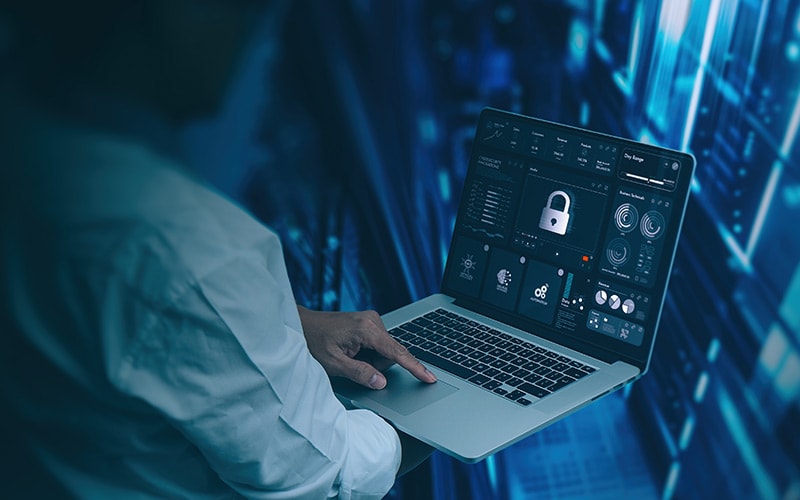- A hybrid business model that combines hardware, software and services will take into account the interests of both the customer and the solution provider for ERP-as-a-service.
- Innovative pricing models strike a balance between the requirements of both end users of ERP-as-a-service and solution providers for commercial aspects.
- Companies that migrated their applications to the cloud have more certainty about their IT spend.
- Linear regression-based pricing encourages continuous improvement and IT spend in focused areas.
- Linear regression has been popular for price estimation and the results show how much each component of the solution contributes to the final price of the bundle of products and services.
Speed and ease of deployment have been the key benefits of cloud-based enterprise resource planning software (ERP) to date. But the COVID-19 pandemic era has created a new set of business needs that make ERP on the cloud even more valuable. Over this time, digital channels have grown rapidly, new business models have been developed, and global supply chains have been thrown into disarray. This has forced organizations to value flexibility and interoperability in how their ERP systems function and integrate with other systems.
Still, ERP-as-a-service has not caught on as quickly as other cloud-based solutions. According to Gartner, customer relationship management (CRM) is the most commonly used software-as-a-service (SaaS) application. The ERP market is about one-third that size.1
Companies that migrated their applications to the cloud have more certainty about their IT spend
The barriers to adoption can often be as obvious as the benefits. ERP applications are relatively complex when compared with office suites or other business applications. Used since the 1960s, ERPs have large amounts of historical data and ongoing transactions. They are tightly coupled with other applications and forced to follow many business rules. Hence, they were slower to migrate to the cloud when compared with other applications.
Now, the benefits of cloud ERP are outpacing the drawbacks for many companies, driven in part by shifting business needs and a better understanding of the technology. We are now passing the point where companies have shifted a majority of their systems to the cloud, according to the Infosys Cloud Radar 2021 study.2 This research also found that businesses gain more confidence about their cloud spending as they move a larger percentage of their systems to the cloud. That acceleration should also extend to the cloud-based ERP market, which is expected to grow by an annual compound rate of 12.4% through 2025, according to Gartner.3
To capture a greater share of this opportunity, ERP-as-a-service providers need to ensure their pricing is right - a balance that keeps prices competitive but doesn’t cut their own margins too thin. Gartner has identified cost optimization - maximizing business value while reducing costs - as one of the four important factors that will drive overall cloud adoption.4 The demands of increasingly cloud-savvy clients will require a more sophisticated approach to pricing.
Many factors influence the price of a cloud offering: the computing hardware, the software and its features, the volume of transactions, and any additional support and services used. Combined, they add a great deal of complexity to determining a price. Cloud providers, however, can cut through these complications with a multiple linear regression model, which derives prices for different combinations of these factors.
The cost of ERP-as-a-service
When the price is right, cloud-based ERP can democratize computing power, especially for small and medium-sized enterprises. Such businesses won’t need to invest heavily upfront in on-premises hardware and software. Instead, they can pay a subscription fee at an agreed-upon frequency. As a result, a capital expenditure is converted into an operating expense. The bundled services also allow companies to avoid ongoing maintenance and upgrade costs, which removes financial uncertainty. The operating cost does not have unexpected spikes and depends on the pricing model that is chosen and actual usage.
The following are typical SaaS pricing models, each with its own advantages and disadvantages.
- Per user pricing -The customer pays a fixed amount monthly or annually, depending on the number of users. This popular model is effective for simple applications, such as a chat tool that has few features. But it falls short when applied to complex applications like ERP, where users would take advantage of different features in a variety of ways. Many would use only the simplest options, whereas a smaller number would take advantage of the more complex features. In some cases, the customer will pay for users who did not use individual applications.
- Per feature pricing - These models are appropriate when a company needs specific functions, particularly ones that are expensive to develop and maintain. However, the ERP provider might create features that real users do not actually need. The challenges are similar to those for user-based pricing; firms might pay for features that many individuals do not use.
- Tiered pricing - Bundles of features are created to cater to specific user groups based on their role or seniority. The challenge is to decide the number of pricing tiers needed. Too few tiers will not reflect the actual cost, while too many become difficult to manage and provide users an overwhelming number of choices.
Individually, these models are easy to understand and provide some obvious benefits. But they are not as effective when setting prices for ERP-as-a-service customers. Innovative options can combine the best of those simpler approaches. A hybrid model will ideally take into account the interests of both the software vendor and the end user. When human intervention is needed for some exceptions in ERP usage, a well-designed hybrid model can offer those services along with the software.
A hybrid business model that combines hardware, software and services will take into account the interests of both the solution provider and the customer
The basic approach to ERP-as-a-service follows business-as-usual pricing, from the initial rollout to the addition of specific modules (see Figure 1). But the application workload is not the same every month. When there is high demand for a manufacturer’s products, then the volume of shipments, purchase order, and vendor invoice and customer invoice transactions increase. When demand is low, these transactions slow considerably. The price charged by the ERP vendor should ideally reflect such fluctuations in the workload.
Figure 1. ERP-as-a-service pricing models should vary based on workload
Source: Infosys
The benefits of linear regression
Linear regression has long been a popular method for estimating prices. The results can show how much each component adds to the final price of a product, service, or bundle. And the output can be interpreted by humans once the model is derived, like the equation below. This mathematical approach models the relationship between a dependent variable and a set of independent variables (see Figure 2) and has been used to predict the price for major consumer purchases. In one study, the price of cars was estimated using the make, model, miles driven, type of car, number of cylinders, engine size, interior style, and cruise control.5 For complex used products, mathematical models such as linear regression make the process transparent and fact based.
Figure 2. Multiple linear regression between price and the independent variables
Source: Infosys
When setting prices for ERP-as-a-service, a company could use linear regression to analyze the hardware on which it is deployed, the number of users, the features used, the number of facilities that use it, and the volume of various transactions. The pricing would also take into account important transactions, such as the number of shipments, purchase orders, and customer and vendor invoices. And the pricing could dynamically change each month.
For a medium-sized enterprise with a maximum of 250 users, we created a hypothetical linear regression model from a few months of data and with the same set of basic ERP features in all the data sets. The input parameters were the number of users, vendor invoices, purchase orders, and service contracts. The output of the regression model was this equation, with the values rounded:
Price or monthly bill in dollars = (47.5 * number of users + 1.25 * number of invoices + 5.5 * number of purchase orders + 40 * number of service contracts).
The model specifies how much each input parameter contributes to the final price that month. To ensure that the pricing level is profitable, an ERP provider could calculate whether the customer lifetime value (CLV) is more than the customer acquisition cost (CAC). CLV is the average revenue per customer or account, divided by the customer churn rate. The lower the customer churn rate, the higher the CLV. CAC is the total spent on sales and marketing divided by the number of new customers acquired.
ERP-as-a-service in practice
The switch to cloud-based ERP can offer organizations both cost savings and opportunities for greater creativity and efficiency. In one case, a national military needed a fourth-party logistics (4PL) platform with multiple software modules and associated services. They all needed to be unified as one application.
The implementation of ERP-as-a-service saved the organization 30% in the total cost of ownership through:
- Optimization of software licenses.
- Reduction in information technology overhead due to a single vendor-based solution.
- Simplification and automation of business processes.
- Consumption-based infrastructure pricing.
At the same time, the conversion allowed the organization to create a private digital marketplace. This marketplace enabled buyers from the procurement department to find approved suppliers for each category of products and services. They can negotiate to arrive at a price point with the help of multiple linear regression.
Figure 3 shows the high-level architecture of the modules implemented. Diverse ERP applications are integrated with each other and other applications. Each ERP module is a market leader in a specific domain.
Figure 3. Architecture for a 4PL ERP-as-a-service platform with multiple ERP packages
Source: Infosys
The modules in this marketplace are procure-to-pay, transportation management, and service management. A business process management team governs the modules and the services required when manual intervention is needed.
Figure 4 shows more details of the architecture, including the modules used in the core ERP application, external applications that are integrated with the ERP, and the associated services.
Figure 4. Industry reference architecture of an ERP system
Source: Infosys
The COVID-19 tipping point for ERP-as-a-service
For companies that prioritize cost management, the use of linear regression and hybrid pricing systems can remove some barriers that kept them out of this market. The short-term gains are clear, however, the benefits of cloud-based ERP go well beyond cost, speed, and scalability.
Linear regression-based pricing encourages continuous improvement and IT spend in focused areas
Lessons from the COVID-19 pandemic have taught organizations the broad value of moving to cloud-based systems. The growth of e-commerce, diversification of global suppliers, and direct customer engagement have forced organizations to integrate ERP with other internal and external applications. This provides companies with the ability to rapidly adapt to new business rules and respond to changing regulatory, legal, and technical requirements. And enterprises can use these added capabilities to reinvent their forecasting and inventory management methods in response to supply chain uncertainty.
This shift to ERP-as-a-service will also make it easier for companies to adopt agile best practices. The platforms give businesses the flexibility to test new features and upgrades in a plug-and-play fashion without upfront capital investments. Also, the pricing modularity offered by a linear regression-based model encourages companies to continuously upgrade the features that provide them with the greatest value.
Even with cloud’s expansive new capabilities, cost will continue to play an important role in deciding whether to switch to ERP-as-a-service and which provider to choose. Organizations will weigh the trade-offs with a more discerning eye - seeking not necessarily the lowest cost but the best cost. To reach this rapidly expanding market, providers will need more powerful strategies that can make sense of an increasingly dynamic business environment.
References
- Gartner Forecasts Worldwide Public Cloud End-User Spending to Grow 23% in 2021, Press Release, April 21, 2021, Gartner
- Infosys Cloud Radar 2021, June 2021, Infosys
- >Gartner Predicts Public Cloud Services Market Will Reach $397.4B by 2022, Louis Columbus, May 13, 2021, Business2Community
- 4 Trends Impacting Cloud Adoption in 2020, Meghan Rimol, Jan. 22, 2020, Gartner
- Introduction to Multiple Regression: How Much Is Your Car Worth? Shonda Kuiper and Grinnell College, Nov. 2008, Journal of Statistics Education









